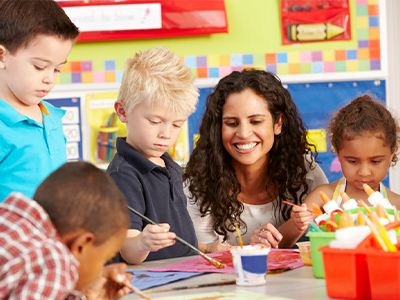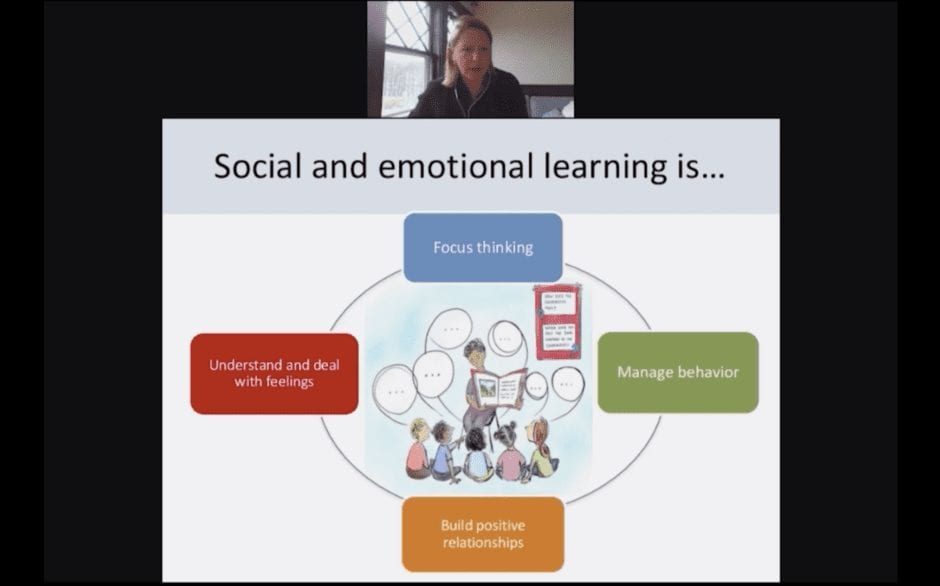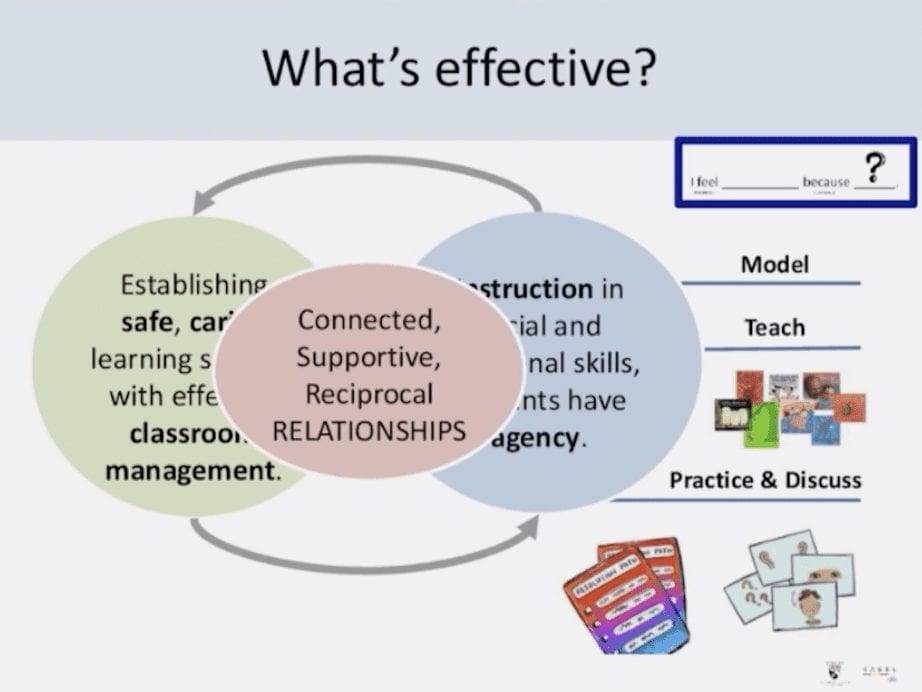Three Big Ideas for Implementing Effective SEL Strategies
Dr. Stephanie Jones emphasizes that when implementing effective social and emotional learning (SEL) strategies, educators, practitioners, and administrators need to think about the what, the why, and the how of the essential skills of SEL. In the International Center for Leadership in Education’s edWebinar edWebinar, Jones, Director of the Ecological Approaches to Social-Emotional Learning (EASEL) Lab, explained that there are six SEL domains studied and documented by researchers. The first three domains are skills and competencies: cognitive, emotional, and social, and the next three are belief ecologies: attitudes, habits of mind, and ways of thinking about the world. One way to think about how these two sets go together is that on the one hand are things that you learn and know how to do, and on the other is a set of internal guideposts that tell you to use those skills when it’s essential and when it matters.
The WHAT… What’s Included
Regardless of setting or age, the goal of SEL is for students to engage in classroom learning activities, and four key components must be in place for this to happen. Students need to focus their thinking by marshaling their attention and using their awareness to gather information from the teacher and the book. To access the content, they need to manage their behavior and not be distracted by what’s happening around them. Students need to build positive relationships, so they must trust that an adult is going to be there for them and is giving them information that they can use. Most importantly, children need to understand and deal with feelings throughout the entire learning process.
Why? Why Now? Why at All?
Three critical pieces of evidence tell us how vital the research and studies about SEL as catalysts of effective social and emotional strategies. Long-term correlation studies provide evidence on how core social and emotional skills measured in early childhood, things like self-control and social competence, are predictive of future life and work outcomes. The second piece of evidence is the trials of programs, interventions, and strategies designed to improve these skills. What those studies have found about programs implemented with fidelity and high quality is that there will be a change in children’s abilities. The third piece of evidence comes out of the world of neuroscience about how stress influences the brain and then cascades into behavior, causing the six domains of SEL to be particularly vulnerable to experiences of stress and adversity.
How? What’s Effective? What’s Innovative?
For an SEL program to be effective, it must establish safe and caring learning settings characterized by effective behavior management, instruction in social and emotional skills, and give students some ownership of the work itself. The characteristics of effective SEL education are living and modeling the skills that educators and practitioners hope that children will acquire, and teaching skills directly about the words and what the behaviors look like that are associated with them. Students must have opportunities to practice their skills, learn from mistakes, and talk about them in a safe environment. Effective social and emotional strategies bridge safe and caring learning environments and instruction with a foundation of connective, supportive, and reciprocal relationships between children and adults.
This edWeb broadcast was sponsored by the International Center for Leadership in Education.
This article was modified and published by eSchool News.
About the Presenter
Dr. Stephanie M. Jones is a professor of child development and education at the Harvard Graduate School of Education. She’s spent the last ten years studying the impact of social-emotional learning interventions on behavioral and academic outcomes of preschool and elementary students. Throughout the process, she has developed and tested programs, pedagogy, and curricula that foster social-emotional competencies among children, adults, and their environments. Stephanie is a firm believer in evaluating educational programs with rigorous scientific research and providing early and middle childhood practitioners and policymakers with accessible content. She’s conducted such research for several programs and early education efforts, including Reading, Writing, Respect, and Resolution, Resolving Conflict Creatively, SECURe, and the Head Start CARES initiative. Before she received her doctorate in developmental psychology from Yale University, she worked as a Research Associate at Columbia University’s National Center for Children in Poverty. In addition to serving as Senior Fellow at ICLE, Stephanie serves on numerous national advisory boards including the National Board of Engaging Schools and the Council of Distinguished Scientists for the National Commission on Social, Emotional, and Academic Development convened by the Aspen Institute. In 2008, she was awarded the Grawemeyer Award in Education for her work on A Vision for Universal Preschool Education; a few years later she received the Joseph E. Zins Early-Career Distinguished Contribution Award for Action Research in Social and Emotional Learning.
Join the Community
Social-Emotional Learning is a free professional learning community on edWeb.net where educators can collaborate and share ideas, examples, and resources for incorporating social-emotional learning in the classroom.
The International Center for Leadership in Education’s mission is to challenge, inspire, and equip today’s educators – both teachers and leaders – to prepare our students for lifelong success.






Comments are closed.